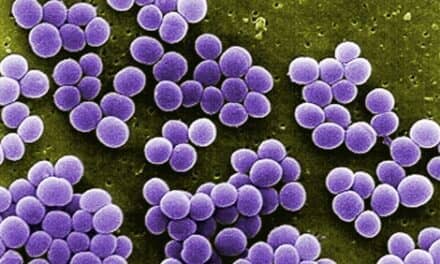A combination of pretherapy imaging and dosimetry can help ensure that patients with refractory differentiated thyroid cancer obtain the maximum benefit from radioactive iodine treatments following redifferentiation therapy. In this novel approach, a small amount of radioactive iodine was used to determine whether the treatment was being delivered to the thyroid lesions.
If the treatment was absorbed well, researchers from The Royal Marsden NHS Foundation Trust were able to calculate a personalized dosage of treatment for each patient. Results from this multicenter phase II trial, led by the UK NCRI Thyroid Cancer Research Group, were published in the June issue of The Journal of Nuclear Medicine.
Differentiated thyroid cancer has been treated with radioactive iodine for over 80 years. While most patients respond well to initial treatment, in some cases further administration is needed. After several treatments, 5% to 10% of patients no longer take up the iodine. This carries a poor prognosis with a median overall survival of three to five years.
“The drug selumetinib has shown potential to restore or enhance the uptake of radioactive iodine treatment in patients,” says Jan Taprogge, PhD, principal clinical scientist at The Royal Marsden NHS Foundation Trust. “In this study we aimed to investigate whether selumetinib could resensitize these differentiated thyroid cancer patients to radioiodine.”
Patients with iodine refractory disease (one or more lesions with no measurable iodine uptake or an iodine-avid lesion that progressed within 12 months of radioactive iodine treatments) were included in the study. Participants underwent baseline 123I-NaI SPECT/CT and then received selumetinib orally twice daily for four weeks. Follow-up 123I-NaI SPECT/CT imaging was used to determine if an increase in 123I-NaI was observed after taking selumetinib. In patients who did see an increase, therapy was warranted. Pretherapy and posttherapy dosimetry were performed and the range of absorbed doses was calculated.
A wide variation in the radiation delivered to different areas of disease was found among patients. However, researchers noted that this variability can be accurately predicted from scans taken just before the therapy with just a small amount of the radioactive drug.
“It is likely that the response to treatment is largely dependent on how much of the injected radiation is delivered to the disease as absorbed dose, and the range of radiation doses delivered may partly explain the variation in outcomes. The ability to predict the radiation doses delivered to areas of disease implies that this could be considered when planning treatment and that treatments may be tailored to individual patients,” says Taprogge.
The authors note that the methods developed for this study—in particular, the close collaboration between medical centers to collect and share images and radiation dosimetry results—open the door to more informed treatments that could improve outcomes. These methods can be applied to the wider field of molecular radiotherapy and could significantly improve the clinical and cost effectiveness of existing and new radiotherapeutics.






